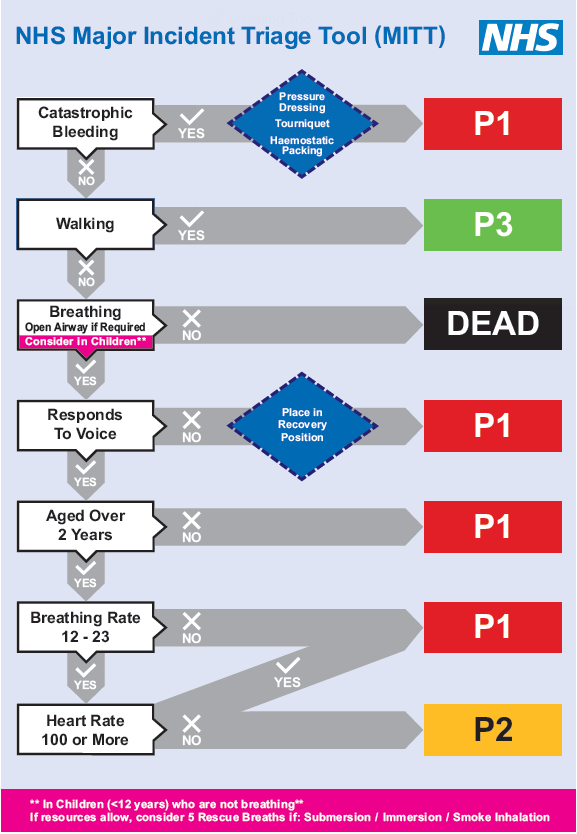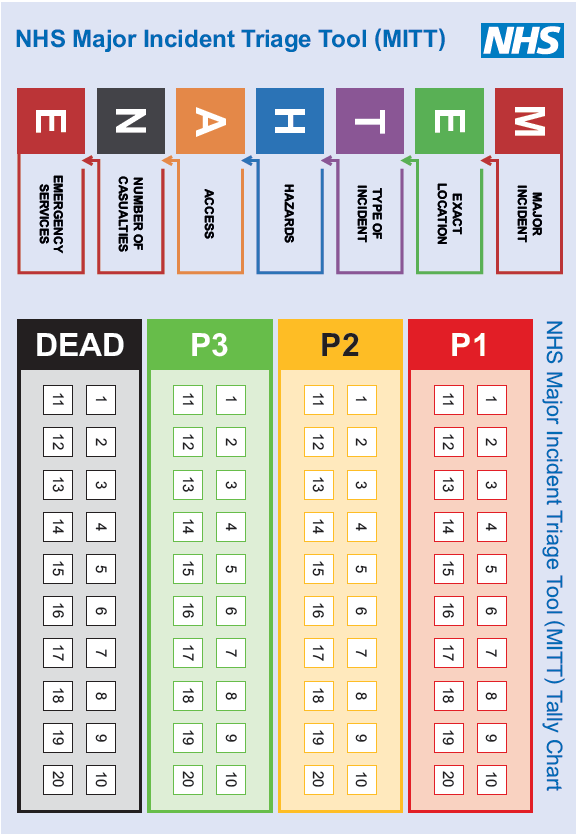The major incident triage tool (MITT) shows the recommended priority triage routes depending on incident characteristics. Each has a ‘yes’, which guides you to the next question, or ‘no’ answer which determines priority (P1, P2 and P3) or dead. Clinical instruction is in bold.
Catastrophic bleeding – Yes – Pressure dressing, tourniquet, haemostatic packing = P1
Walking – Yes = P3
Breathing – No – Open airway if required = Dead. Or in children (under 12 years) who are not breathing. If resources allow, consider 5 rescue breaths if : submersion/immersion/smoke inhalation.
Responds to Voice – No – Place in recovery position = P1
Aged over 2 years – No = P1
Breathing rate 12 – 23 – No = P1
Heart rate – No = P2
The tool then sets out the METHANE model – which brings structure and clarity to the initial stages of managing any multi-agency or major incident
- M – Major incident
- E – Exact location
- T – Type of incident
- H – Hazardous
- A – Access
- N – Number of casualties
- E – Emergency services
The tool then provides option boxes to number how many patients are in each category of priority – P1, P2 and P3 as well as Dead from 1 to 19.



